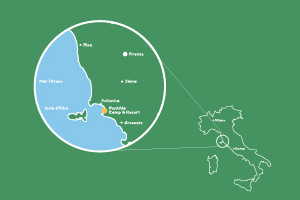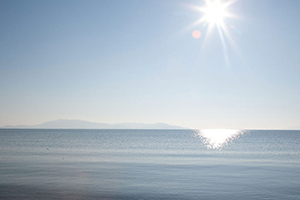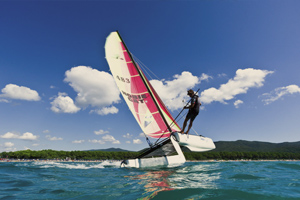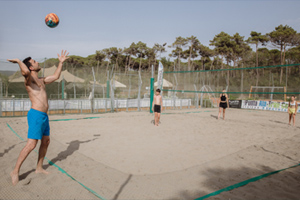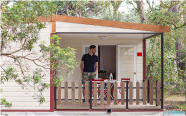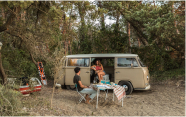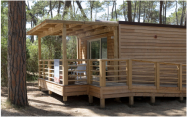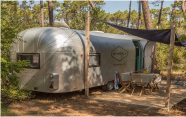Massa Marittima: what to see, history and how to get there

Nestled in the Colline Metallifere, the Tuscan town of Massa Marittima combines a rich natural, historical and artistic heritage. Its compact size and proximity to the busy Tuscan coast make it an ideal centre of exploration for visitors. Highlights include the Romanesque-style cathedral, an extensive museum of sacred art and remains of ancient walls. Accommodation options are numerous and cater for different budgets. Accessible by car or public transport, this preserved medieval town presents a perfect blend of tranquillity and cultural richness, with close proximity to seaside towns for those seeking coastal activities.
Massa Marittima
This is located in the heart of the Metalliferous Hills, which rise behind the Tyrrhenian Sea along a large part of the Tuscan coast, in an area rich in natural, historical and artistic value. Exploring Massa Marittima, you will have the opportunity to see a fascinating Romanesque-style cathedral, a significant museum with a wide range of sacred art on display, as well as distinct structures and the remains of the ancient walls. So, a small treasure trove of streets and squares, making it very easy to explore on foot, even for visitors staying on the popular and crowded Grosseto coast: the centre of Follonica, for instance, is only a 20-minute drive away. Precisely for this reason, you could use Massa Marittima as a foothold for your seaside stay in the Grosseto Maremma: you will have the opportunity to reside in a beautifully preserved medieval village, appreciate the peace and serenity of the Metalliferous Hills, and at the same time be a short drive from the beaches.
What to See in Massa Marittima
Despite its small size, there is no shortage of attractions in the centre of Massa Marittima. Start your tour from Piazza Garibaldi, the beating heart of the town, and proceed on foot through the side streets, not forgetting any of the main monuments and places of interest.
Massa Marittima Cathedral
The Cathedral of San Cerbone, awarded the status of Italian national monument by the state, is the cathedral of Massa Marittima. It is a Romanesque temple erected between the 11th and 14th centuries, with various additions in later centuries that gave it the appearance we can admire today. At 60 metres long and with a bell tower almost 40 metres high, the church is definitely the largest in the entire municipality, and one of the most important in the entire province of Grosseto. The exterior façade clearly reflects the influence of the Pisan Romanesque style. The panels of the entrance portal feature bas-reliefs of the Stories of San Cerbone, made at the beginning of the 13th century, while the interior, divided into three naves by sturdy columns, houses magnificent works of art such as the baptismal font from 1200, the stained-glass window of the central rose window from 1300, and Duccio di Buoninsegna's Maestà from 1316.
Archaeological Museum
Opened in 1867, Massa Marittima's archaeological museum is housed in the rooms of the palazzo del Podestà. It was founded by Stefano Galli of Modigliana, a scholar of local history, whose father donated an initial series of artefacts and finds to the institution. The exhibition is spread over two floors of the palazzo. On the ground floor are the rooms dedicated to prehistoric archaeology, particularly dedicated to the Palaeolithic and Mesolithic periods, with casts of anthropomorphic apes and a considerable quantity of artefacts, including bits and blades, found in the area. The second room, which contains a life-size reconstruction of a living cave, is particularly interesting. The tour continues on the upper floor, which houses an area dedicated to the Etruscans, who lived in this area. Most of the exhibits come from excavations carried out in the 1980s by the University of Florence near Lake Accesa. A living area has also been reconstructed using dioramas and models, including a life-size reconstruction of an ancient loom, as well as Etruscan food, wine and accessories.
Museum of Sacred Art
Located within the museum complex of San Pietro all'Orto, at Corso Diaz 36, the Massa Marittima Museum of Sacred Art was established in 2005. The works mainly come from the cathedral, and the exhibition is spread over five rooms on two floors. On the ground floor are alabaster bas-reliefs, capitals, Gothic sculptures, a precious crucifix by Giovanni Pisano, and a large section devoted to 14th-century art, in which Antonio Lorenzetti's Maestà and his brother Pietro Lorenzetti's Crucifix stand out. On the upper floor, there are ceramics from all over Italy, a large exhibition area dedicated to 15th-century art and painting, and three particularly interesting installations showing furnishings and floors from other churches in the area. Directly from the museum is access to the Angiolino Martini contemporary art exhibition centre, where 20th-century paintings and graphics can be admired.
Town Hall
The Town Hall stands out for its unique charm, located at Piazza Giuseppe Garibaldi 10. This historic structure is the result of the union of two tower houses, one from the 13th century and the other from the following century, joined by a central body dating from the same period. The façade displays the Medici coat of arms, added in 1555 when the territory was annexed to the Grand Duchy of Tuscany. Inside, you can admire the 16th century Cappella dei Priori and the work "Icaro" by Polish sculptor Igor Mitoraj.
Opposite, in Piazza Garibaldi, you will find the Palazzo del Podestà, built in the early 1200s. As was customary in Tuscan villages, the palace was the residence of the podestà, the executive head of the city. Today, since 1978, it houses the Massa Marittima archaeological museum.
In Piazza XXIV Maggio is the Convento delle Clarisse, or Convent of Saint Clare, founded by Saint Bernardine of Siena, a native of Massa Marittima. This convent houses the municipal public library named after Gaetano Badii, and preserves a rich heritage of around 30,000 volumes.
The ancient medieval walls of Massa Marittima, built in the 12th century, embrace the old town. Although many sections have fallen into ruin over the centuries, some watchtowers and gates have been restored to their former glory.
Finally, the Toscana Fotofestival is an unmissable event for photography enthusiasts. Founded in 1993, the festival has attracted a large number of visitors and has presented the works of world-renowned photographers. The festival starts in August with exhibitions, meetings and screenings, while September offers workshops led by international names to explore the techniques and secrets of photography as an art form.
Where to Sleep in Massa Marittima
A rich variety of accommodation is available in this characteristic Tuscan town. The central area of the town is rich in accommodation options, ranging from cosy hotels to comfortable B&Bs, from family-run flats to holiday homes. The possibilities suit every price range and every need, making the choice a pleasant dilemma. Being accommodated in the heart of Massa Marittima, you will be within walking distance of historic monuments, shops, bars and restaurants.
Alternatively, if you yearn for supreme tranquillity and wish to immerse yourself in the peaceful Tuscan countryside, you can choose to move a few kilometres away from the centre. Here, amidst the native flora and fauna and relaxing landscapes, you will find numerous rural properties, rustic houses and agriturismi. These structures, lovingly restored and updated with all modern comforts, offer visitors a high-quality stay experience and a range of superior services.
History of Massa Marittima
The history of Massa Marittima is definitely linked to the rich pyrite, silver and copper mines of the Colline Metallifere, exploited since the third millennium B.C. and then with particular intensity in Etruscan and medieval times. A decisive impulse to its development was given when the bishop's seat was moved here from Populonia, perhaps as early as the 9th century. The urban core grew around the castle of Monteregio, the residence of the feudal bishop.
During the 13th and 14th centuries, Massa Marittima reached its peak of economic, political, demographic and cultural prosperity. The riches extracted from the mineral deposits allowed the town to proclaim itself Free Commune in 1225, reach 10,000 inhabitants and mint its own currency, the 'massetano grosso'. The most artistic and monumental buildings that today define the urban fabric of the town date back to this period. In Piazza Maggiore, now Piazza Garibaldi, are concentrated all the buildings essential to the town's public life: the Duomo, on which Nicola Pisano worked; the Palazzo del Podestà, now the Archaeological Museum; the Palazzo del Comune, the Loggia del Mercato, the Fonte Pubblica and the Zecca.
In 1335, Massa Marittima lost its political autonomy following the conquest by Siena, which had long coveted the town's mines. This was followed by a period of economic and demographic decline, aggravated by the plague of 1348. Despite the difficulties, mining was never completely abandoned, although it was significantly reduced. The Medici, who added the province of Siena to the Grand Duchy in 1557, attempted to intervene to promote the territory's recovery. An important revival took place in 1737 with the arrival of the Lorena family, who succeeded the now extinct Medici family.
Metal mining began its definitive decline in the 1780s. Since then, Massa Marittima has developed and cultivated a new vocation for tourism, investing energy and resources in the valorisation of its historical and artistic heritage.
Map of Massa Marittima
How to get to Massa Marittima
The town is located in the north of the province of Grosseto, near the border with Livorno, 20 minutes from the coast. To get there from Florence, there are two routes. The first is longer but easier: take the SGC FI-PI-LI to Livorno, then the A12 south to Rosignano Marittimo, continuing on the SS1 Aurelia to Follonica, and finally the SR439 Volterrana to Massa Marittima. The alternative, which is shorter by half an hour, takes you through the heart of Tuscany, crossing the hinterland of Siena and the Val d'Elsa, to Grosseto from the north.
From other Tuscan cities, the routes are more delineated. From Pisa or Livorno, it takes about an hour, following the Statale Aurelia south to Follonica, and then onto the SR439 Volterrana. The same time of about one hour is needed to reach Massa Marittima from Siena, crossing the SP73bis and SP441, passing near the abbey of San Galgano. Finally, from Grosseto, about a 40-minute journey separates you from Massa Marittima, covering a distance of less than 50 km. In this case, you will travel north along the Aurelia road as far as the Gavorrano Scalo exit, from which you will drive along a short stretch of the Collacchia provincial road, then turn left at the junction with the Accesa provincial road, which leads directly to Massa Marittima.
With regard to public transport, there is a bus service, the 37F, connecting Follonica to Massa Marittima, every hour from Follonica railway station. The bus journey takes about 35 minutes. To reach Follonica, you can take regional trains on the Pisa-Grosseto line. From Florence Santa Maria Novella, there are some direct options, especially in the morning, but changing at Pisa Centrale is generally more practical. The entire journey from Florence to Massa Marittima can vary between 3½ and 4½ hours, depending on the waiting time for connections.
Where Massa Marittima is located
Massa Marittima is located in the province of Grosseto, in the splendid hinterland of the Maremma. Its position places it a short distance from the border with the province of Livorno. Nested among the charming Tuscan medieval towns, Massa Marittima is an enchanting example of Maremma art. It is located in the mineral-rich hills, elevated 400 metres above sea level, and is about 20 kilometres from the sea.












